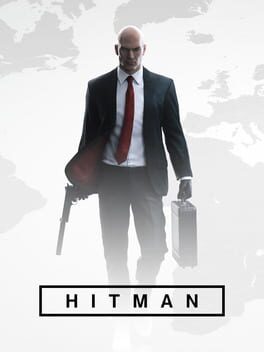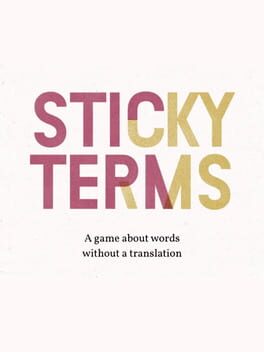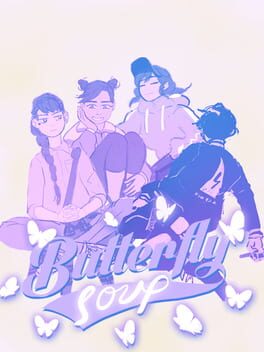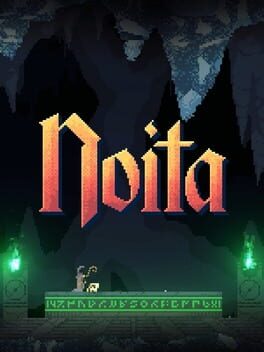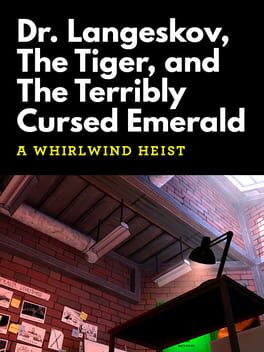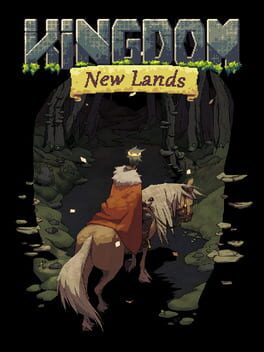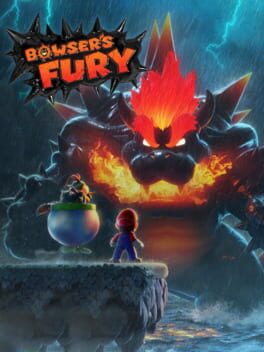nex3
BACKER
2016
I always knew I'd love this series if I ever got a toehold in the play style, and as it turns out I was right. The ritual of planning out and perfecting every single step of the perfect hit appeals to my yearning for perfectionism, and the intricacy of the many events and interactions in each level charges up my sense of exploration. Not only is this a perfect little mechanism with immaculately interlocking gears, you can go inside it and poke at everything and see what happens. Sublime.
2020
2017
This review contains spoilers
As a game, this is almost unbearably grindy and obtuse. As a piece of art evoking the experience of poverty, of course, the grindy obtuseness is part of the point--but I'm not sure it's all that effective as an art piece, either. It seeks to undermine expectations about the arc of a video game by providing the context of adventure without any of the actual mechanics, but ultimately it asks the player to perform quests, collect items, and even do a bit of light dungeon delving. It presents a world that seems to be inescapable and governed by incomprehensible luck as a mirror of poverty, but then it provides a formula for fixing your own luck and (depending on how you interpret the ending) possibly escaping the cycle. The demands to be game-like, to have an arc the player can complete, are inherently at odds with the point the game is trying to make and I think it suffers for failing to resolve that contradiction.
2020
It is SO HARD to aim accurately in this game, and yet the game seems hell bent on requiring the player to master combat in order to have any hope of progressing more than a few minutes. Doing poorly in even a single fight is extremely punishing, since you're liable to end up poisoned or on fire and losing half your health bar in a single go. The core draw of this genre is the exploration of a possibility space, but that's so hard here the game seems almost unplayable.
2021
2019
2021
This game has a lot of promise and tragically middling delivery. The core concept of automating the boring parts of RPG combat and instead focusing the player's attention on building challenges for the hero to grind on is brilliant, and the vista of exploratory potential that appears the first time you set two tiles next to each other and they combine in an unexpected way is instantly compelling.
The problem is, Loop Hero trips over its own feet at every opportunity. It dangles exploration in front of the player but then punishes them for diving into it by making most tile combinations produce run-endingly powerful enemies. It completely fails to explain important mechanical interactions, a fact made much worse by a dire lack of copy editing which results in the each game concept having multiple different names in different places. And the different classes feel more like difficulty levels than play styles, with a good Necromancer run being a cakewalk and a Rogue run being a struggle at the best of times.
I'm excited that this has entered the cultural conversation, and I'm not sad to have spent a week beating it, but I'm also happy to see the end now that I've beaten the final boss.
The problem is, Loop Hero trips over its own feet at every opportunity. It dangles exploration in front of the player but then punishes them for diving into it by making most tile combinations produce run-endingly powerful enemies. It completely fails to explain important mechanical interactions, a fact made much worse by a dire lack of copy editing which results in the each game concept having multiple different names in different places. And the different classes feel more like difficulty levels than play styles, with a good Necromancer run being a cakewalk and a Rogue run being a struggle at the best of times.
I'm excited that this has entered the cultural conversation, and I'm not sad to have spent a week beating it, but I'm also happy to see the end now that I've beaten the final boss.
2016
There's "letting the gameplay be the tutorial" and then there's being outright obscurantist about the effects of any action you can take. It's pretty clear that this is a kind of RTS/Tower Defense game from the word go, but the actual functioning of the mechanics starts out poorly-explained and only gets more opaque as time passes and the scope of the game grows. Could I have looked up a guide online? Sure, but why would I do that for a game that I'm not even sure I want to play yet?
2021
What a fascinating confluence of ideas is Bowser's Fury. The traditional 3D Mario formula has always striven to present a feeling of a holistic world, with each stage being an interrelated part of a whole, but runs up every time against the constraint that stages must exist in separate hermetically-sealed bubbles. Bowser's Fury suggests a new way to make good on that promise by placing the player in a single conjoined open world (in the sense that became so popular among 2010s AAA games) and allowing the player to move between these worlds with neither a menu nor a separate overworld interposing itself.
But at the same time it falls on its face in doing so because each of the stages is itself nothing like the fleshed-out living worlds of Odyssey or even Galaxy. Instead, the islands Mario visits are more akin to the game's cartridgemate 3D World: mostly-linear platforming challenges highlighting specific mechanical ideas rather than broader worldbuilding concepts. Although the structure of the game (to say nothing of its use of Shine Sprites) suggests the possibility of something like Mario Sunshine but even moreso, the actual play only captures that vibe in the ancillary moments when you forego the primary quest and wander the liminal spaces of the map looking for quiet little secrets.
I hope this foreshadows a Mario game that casts off the mechanical myopia (as well as the incessantly mandatory boss fights) and makes good on the ideas embedded within. But I wonder sometimes if Nintendo's increasingly egregious conservatism will inherently edge out the worldbuilding I'm looking for. Mechanics are safe, because mechanics don't need to mean anything. If a world is to be interesting, it has to bear some relation to our world and the heady semiotics that come with it, and more and more that seems to be anathema to Nintendo—particularly in their flagship franchise, where every moment Mario or his friends are onscreen must adhere to a perfectly sanitized style guide and may under no circumstances reflect the messy realities of human existence.
But at the same time it falls on its face in doing so because each of the stages is itself nothing like the fleshed-out living worlds of Odyssey or even Galaxy. Instead, the islands Mario visits are more akin to the game's cartridgemate 3D World: mostly-linear platforming challenges highlighting specific mechanical ideas rather than broader worldbuilding concepts. Although the structure of the game (to say nothing of its use of Shine Sprites) suggests the possibility of something like Mario Sunshine but even moreso, the actual play only captures that vibe in the ancillary moments when you forego the primary quest and wander the liminal spaces of the map looking for quiet little secrets.
I hope this foreshadows a Mario game that casts off the mechanical myopia (as well as the incessantly mandatory boss fights) and makes good on the ideas embedded within. But I wonder sometimes if Nintendo's increasingly egregious conservatism will inherently edge out the worldbuilding I'm looking for. Mechanics are safe, because mechanics don't need to mean anything. If a world is to be interesting, it has to bear some relation to our world and the heady semiotics that come with it, and more and more that seems to be anathema to Nintendo—particularly in their flagship franchise, where every moment Mario or his friends are onscreen must adhere to a perfectly sanitized style guide and may under no circumstances reflect the messy realities of human existence.
2013
Back in 2013 when I played through this on the Wii U, I got up to Champion's Road and, after banging my head against that level for a while, set the game down and decided to come back to it later. I never did. So when the Switch version was announced, I was excited to finally master this game.
This time, I barely even got through the first few screens of Champion's Road before deciding once and for all that it wasn't for me. As beloved as this game is, it hits a bit of an uncanny valley for me personally: on one hand, I find the controls harder to manage with great precision and the moment-to-moment decision trees more overwhelmingly large than a 2D Mario. It's harder to get into the satisfying space of focused iteration, where each failure feels like it brings me closer to achieving my goal. This isn't just an issue with Champion's Road: my deaths in many of the harder levels filled me with anger rather than determination.
On the other hand, you don't have the sense of place of a more traditional 3D Mario. Sunshine and Odyssey are of course the best examples here, but even the Galaxies' planets felt alive in ways that SM3DW's levels (for all their cute enemies and splashy backgrounds) don't. Their sense of freedom and exploration is hamstrung by the game's linearity.
It's still a Mario, and it's still top-tier Nintendo level design, so I'm not sad to have played through it again. If nothing else, it taught me something about what I want from my platformers.
This time, I barely even got through the first few screens of Champion's Road before deciding once and for all that it wasn't for me. As beloved as this game is, it hits a bit of an uncanny valley for me personally: on one hand, I find the controls harder to manage with great precision and the moment-to-moment decision trees more overwhelmingly large than a 2D Mario. It's harder to get into the satisfying space of focused iteration, where each failure feels like it brings me closer to achieving my goal. This isn't just an issue with Champion's Road: my deaths in many of the harder levels filled me with anger rather than determination.
On the other hand, you don't have the sense of place of a more traditional 3D Mario. Sunshine and Odyssey are of course the best examples here, but even the Galaxies' planets felt alive in ways that SM3DW's levels (for all their cute enemies and splashy backgrounds) don't. Their sense of freedom and exploration is hamstrung by the game's linearity.
It's still a Mario, and it's still top-tier Nintendo level design, so I'm not sad to have played through it again. If nothing else, it taught me something about what I want from my platformers.
After playing through all the Soulsies this year, this felt like a reminder of why I usually DON'T like action RPGs. Maybe I've grown too used to their deliberate combat speed and minimalist mechanics, but the combat in Ys melted together into an undifferentiated sea of numbers flying off enemies as they soaked up damage. I kept learning special move after special move but I could never figure out which to use when and why so I would just jam buttons almost at random (and usually win anyway). Flash guard and evade were almost enough to pull it back out to something I felt like I could engage with, if they didn't feel like an ancillary feature of the primary goal of jamming the right buttons to maximize DPS.
2017
2020
